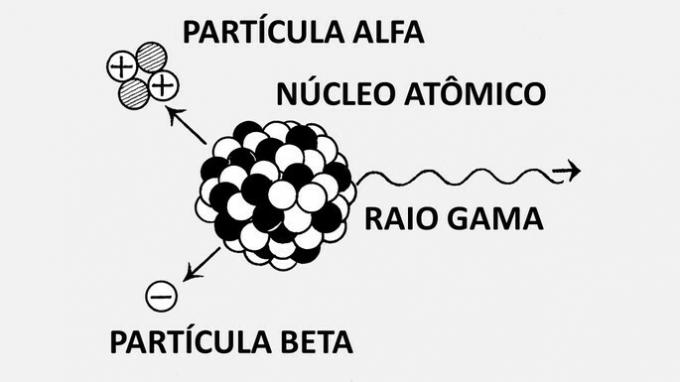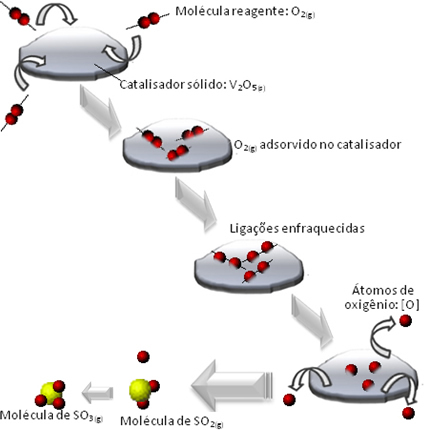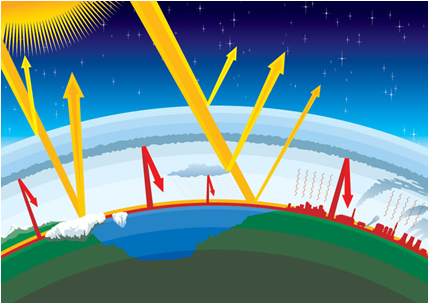On September 13, 1987, the biggest radiological accident in Brazil, in Goiânia, capital of the state of Goiás. The source of the disaster was a radiotherapy device left in a disabled clinic.
The equipment was found by scavengers and taken to a junkyard. What the two men didn't know was that it contained radioactive material, the cesium-137.
The substance harmful to humans caused hundreds of direct and indirect victims because of the radioactivity of the powder cesium chloride (CsCl).
Accident History Summary
The story of the accident began in downtown Goiânia, where the Goiano Radiotherapy Institute operated. Two garbage collectors entered the abandoned clinic and found a huge device left in the area.
In order to sell the valuable parts, as they contain steel and lead, the men took the equipment to Devair Alves Ferreira's junkyard on Rua 26-A, in the Airport Sector.
Upon dismantling the equipment, Devair found a nuclear capsule containing a white powder that glowed blue in the dark. Fascinated by the material and finding it to be something of value, he exhibited the discovery to family, friends and neighbors unaware of the danger at hand.
As cesium is a radioactive element, the nucleus of its atom disintegrates. The unit used to measure the radioactivity of the material is the Becquerel (Bq), which corresponds to one disintegration per second, or the Curie (Ci), which is equivalent to 3.7 x 1010 disintegrations per second.
When the equipment was manufactured in 1971 in the United States, there was approximately 28 g of cesium chloride and the radioactive activity was of 2,000 Ci. When he found it, 16 years later, the capsule still contained 19.26 g of the substance and had an activity of 1,375 Ci or 50.9 TBq.
The amount of cesium-137 was enough to generate a large contamination, as the radioisotope spread quickly because it is a fine powder that easily adheres to humid places.
The consequences of exposure
Hours after the first contact with cesium-137, symptoms of intoxication began. People who experienced dizziness, diarrhea and vomiting went to hospitals. With no knowledge of the radioactive material in the region, doctors believed it was a contagious disease.
Just two weeks after the exhibition, Devair's wife went to the Health Surveillance, taking some of the equipment that was in the junkyard with her.
The radioactive accident was only confirmed on September 29, when nuclear physicist Walter Ferreira was called to the scene and, using detectors, indicated the high levels of radiation. Immediately the National Nuclear Energy Commission (CNEN) was called upon to implement an emergency plan.
The effects of radiation were felt by residents who had direct contact with the material and those who worked to remedy the accident, such as doctors, nurses, firefighters and police.
Accident victims: how many and who were they?
According to official data, the accident resulted in four fatalities one month after contact with the substance. The main causes were hemorrhage and generalized infection.
The first death was that of Leide das Neves Ferreira, a 6-year-old girl, who became a symbol of the tragedy. Maria Gabriela Ferreira, who helped to unravel the mystery, was the second fatal victim, as well as Israel Santos and Admilson Souza, employees of the junkyard.
However, it is estimated that more people have died from complications and many still bear the consequences of radioactive inheritance.
To learn more about radioactive materials, see: Radioactivity.
Measures taken after the accident
For the decontamination of the site, seven main foci were identified and isolated. About 112,800 people were monitored and grouped according to exposure and symptoms.
3500 m were collected3 of nuclear waste and stored in concrete and buried containers 23 km from Goiânia, in the city of Abadia de Goiás. The Central-West Regional Center for Nuclear Sciences monitors the activity of radioactive waste.
In 1988, the Leide das Neves Ferreira Foundation was created by the State of Goiás to monitor radiation victims according to their exposure levels. Today, the services are provided by the State Center for Assistance to Radio Injury – C.A.RA.
In 1996, those responsible for the Goiano Radiotherapy Institute were judged. The sentence for manslaughter (when there is no intention to kill) was three years and two months in prison, but the sentence was replaced by provision of services.
Law No. 9425 created on December 24, 1996 granted a special pension to the victims of the biggest nuclear accident in Brazil and in the world, which occurred outside nuclear power plants.
understand what it isNuclear waste.
Cesium-137: what is it? and effects on the organism
Cesium is a chemical element on the periodic table, atomic number 55 and symbol Cs. Its name comes from Latin caesium and it means "blue sky". This alkali metal has 34 known isotopes, which are unstable or radioactive.
The cesium-137 isotope is unstable and its core is easily disintegrated, promoting radioactive emissions. When the nucleus of an atom disintegrates, nuclear fission occurs, which produces a new chemical element and emits radiation (alpha, beta or gamma).

What is cesium-137 for?
Radioactive emissions are capable of destroying cancer cells, which are more sensitive to radiation. Therefore, calculated doses of the radioisotope of cesium are used in the treatment of cancer.
The Dangers of Cesium-137: Why the Accident Was So Serious
The danger occurs when ionizing radiation, which has a high penetrating power, emits high concentrations of radioactive particles. The main biological effect is the change in blood cells, such as the loss of white blood cells.
The cesium-137 isotope, for example, acts in the body causing:
- hemorrhages,
- infections,
- acute illnesses,
- hair loss
- death (depending on the amount and time of exposure).
Also read about the biggest nuclear accident in history: Chernobyl accident.



